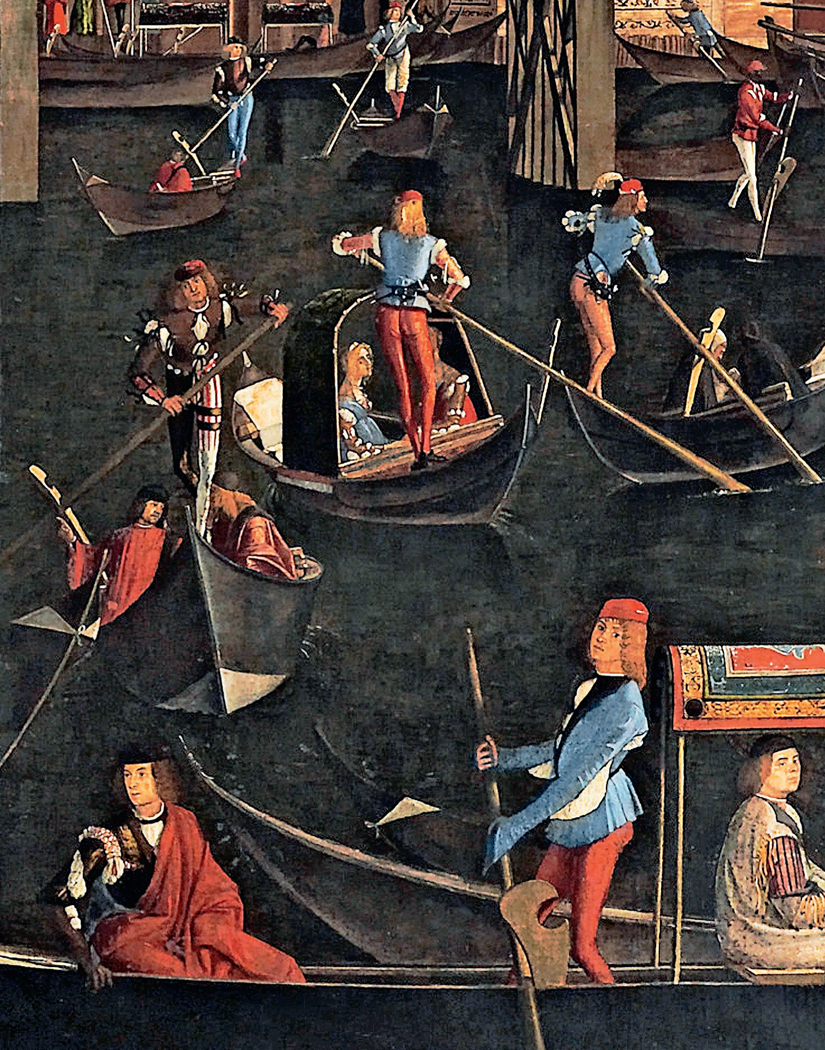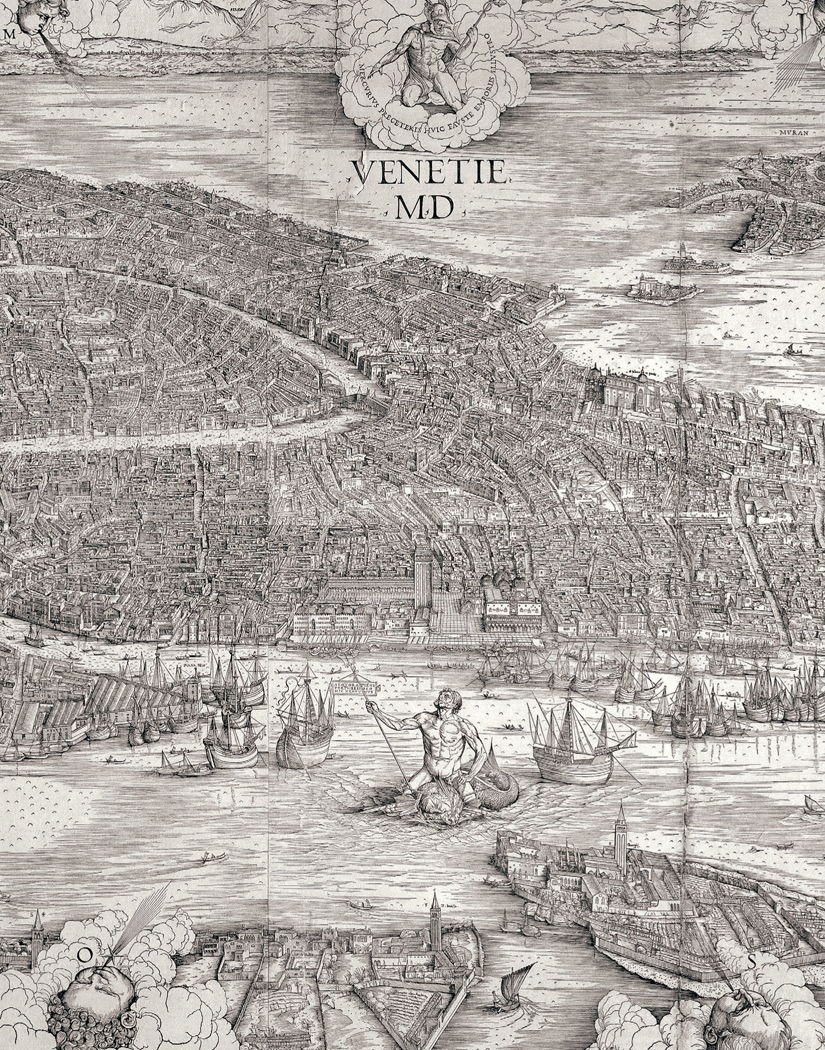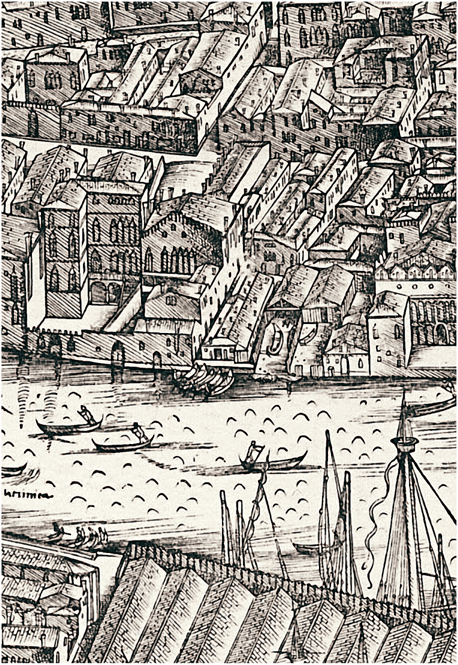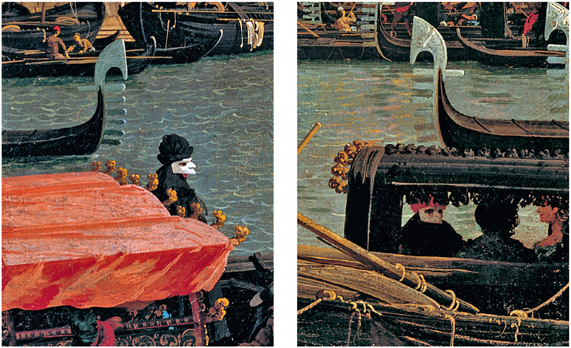

The Master Builder
One of the common experiences of too-frequent travel is the phenomenon of waking up in a hotel room with no idea of where the room is: what city, what country, what continent. Experience teaches us to lie still and study the patterns of light, and once the source is discovered, memory of the location usually follows.
To enter into the squero, or boathouse, where the Tramontin family has been building gondolas for four generations is to experience a similar sensation of complete dislocation. This time, however, it is not the dresser in the wrong place that provokes geographic confusion but the objects in the large room which lead to a feeling of complete chronological displacement, for there is nothing to give a sign of year or epoch, nor would it be easy to guess the century. To right and left there are two gondolas raised on wooden cradles. A young man leans over the one on the left, planning away at a wooden board with a hand-held plane identical to one my grandfather used. The boy on the right holds a slim hammer and taps small wooden pegs into the holes in a board that must have been made by the hand-propelled drill that lies at his feet. Luckily, he’s wearing one item that provide temporal orientation: a new pair of red Converse sneakers.

Roberto Tramontin, the maestro, steps up and shakes my hand; small bones adjust themselves to more comfortable positions. Tramontin is tall and thick, with the muscled body of a man who works hard all day and likes to eat and drink. His eyes are blue, as are the eyes of many Venetians, and his remaining hair is black. His smile is easy and relaxed, his teeth perfect. He goes back to what he was doing, feeding small pieces of scrap wood into an old metal stove with a tall tin pipe that disappears out of the roof. The stove, which gives an occasional burp of black smoke, manages to warm nothing beyond a half meter from it and leaves the rest of the cement-floored squero cold. And damp.
On the far wall hangs an old black and white photo of his father, who taught him what he knows, though he says it took him 24 years to learn enough to make a gondola on his own. He starts to talk about perfection and the necessity, which he insists is absolute, that this perfection reside in every one of the pieces in a gondola, whether they are visible or invisible. Any imperfection will destroy the whole, he insists, and I see how serious he is about this by the way he keeps an eye on every shaving that peels away from the apprentice’s plane.
Only five squeri to build gondolas are left in Venice. When I ask him if this decline will affect him and what he thinks the future holds, he explains that, though he usually builds only a single new gondola each year, visiting groups of tourists also bring in extra money, as does repair work, and thus they manage to go on. He has a long list of gondolieri who are willing to wait at least four years to have a gondola made by Tramontin.
A gondola, he explains, will last on average thirty years, though the bottom part, the opera viva, which is constantly under water, needs to be replaced after fifteen, thus providing more work. His eyes move to a large plastic-covered rectangle high on the far wall, and he says, “If I could sell that . . . “
“That,” as it turns out, is the Nineteenth Century felze which once formed the central part of the gondola of the Savoia family, the former kings of Italy. It’s complete, has five crystal windows, two on each side and the one in front with the Savoia crest burned into it with acid, and the original black cloth with 32 silk pompons. He restored it completely some years ago, part of which process entailed stripping off layers of paint and gilding. “When they had no money, the Savoias had it painted, and when the money came in, they had it gilded again.”

He would like to sell it and offers me 10% of the selling price to advertise it successfully. When I renounce the idea of the 10%, our friendship deepens, and he returns his attention to the two gondolas: the first is to go to an exposition in Munich and then be brought back to be used as a traghetto gondola; the other is for a private client, another gondoliere. Since we’d become, however fleetingly, business partners, I asked if he knew what a gondola license costs.
“The official price is seventy thousand Euros,” came his prompt reply.
“Prezzo ufficiale,” is the Italian equivalent of Santa Claus, so silence was the only suitable response. “Probably ten times that,” he offered into my continuing silence. At present, he told me, there are 425 gondola licenses, though the city is about to offer eight more. The owner can use it or sell it or leave it to his son. Or, presumably, to his daughter, but since there is only one woman gondoliere, and she didn’t pass the rigorous tests that allow entrance into the guild until 2010, that might not be a wise decision. For what it is worth, rumor has it that a taxi license sells for a million, though Tramontin joined with the two apprentices in thinking this an exaggeration.
I asked him about the tools lined on the walls and used by the apprentices, most of them wooden and hand-made and many of them with their parts joined together by elaborate hemp bindings. He explained that they were used by his great-grandfather, who had opened the squero on 2 February, 1884, also by his grandfather, then paused to add that the grandfather of his great-grandfather had been a gondoliere, as if to ward off any suspicion that this family had insufficient salt water in its veins.
He was taught to make his calculations in the Venetian piede, which is divided into twelve once for a total of 347.73 mm or 13.69 inches. Tramontin explained that it is far easier for him to remember the lengths of the various pieces in piedi, which are given in whole numbers for the gondola, rather than in meters or centimeters, which demands multiplying numbers that have been carried out to three decimal places. The young apprentices have to adapt to this system: he’s too old to change his ways.
The past was never far from us there; he spoke as if a rush order that arrived in 1925 had come in that morning. To fill it, the two men working in the squero, his father and his grandfather, built 7 gondolas in 21 days and even managed to complete one entire boat in the space of 24 hours. Yes, the pieces had already been cut – by hand, please note – but they managed to put it together in a single day. It was obvious that he was as proud of this triumph as if he had taken part in it himself.
He took my arm and drew me close to the gondola on the left and pointed to a piece of wood that the process of building was soon to hide by the addition of the planks of the deck. It was, he explained, his signature, a pattern of different-sized triangles cut into the edges of the board, reminiscent of the brand burned into the hide of cattle. When I asked why the piece of wood was placed upside down, further hiding the Tramontin signature, he said that to do it any other way would be vulgar. What he did not have to say was that any gondoliere, seeing the perfection of the boat, would recognize instantly the hand that had built it.